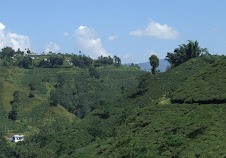
Introduction
In Patan, the traditional water supply system through the hiti is centuries old and still functions today, meeting a large pe rcentage of the residents' water needs. The water is channeled from a distance of 12km from the town and transferred through an intricate system of open canals and covered aqueducts to the many spouts that are distributed throughout the town. This constitutes a vital source of water in a place where the water supply system is inadequate. Through the hiti, thousands of people have access to clean water for their household and small agricultural needs.
A brief history
The Malla rulers of the 13-15 th Centuries commissioned an intricate canal network known as the ‘Raj Kulo' to transfer water from Lele, 13km away from Patan, to fill their royal baths. As the population grew, an elaborate underground water distribution network was built to transfer and supply water to the various spouts in the city. This network remained a vital part of the water supply system until the 1970s, providing a constant source of supply to the many water spouts in Patan.
Degradation and loss
As the city grew, new houses developed and road network expanded, developers paid no attention to the canals beneath and some water spouts were buried beneath construction projects that were considered more important and modern to a ‘developing' city. With a few years many of the hitis ran dry. Experts and activists working on the issue feel this resulted from people getting used to water coming through the mains. As a result the spouts were forgotten and buried.
In Patan, the traditional water supply system through the hiti is centuries old and still functions today, meeting a large pe rcentage of the residents' water needs. The water is channeled from a distance of 12km from the town and transferred through an intricate system of open canals and covered aqueducts to the many spouts that are distributed throughout the town. This constitutes a vital source of water in a place where the water supply system is inadequate. Through the hiti, thousands of people have access to clean water for their household and small agricultural needs.
A brief history
The Malla rulers of the 13-15 th Centuries commissioned an intricate canal network known as the ‘Raj Kulo' to transfer water from Lele, 13km away from Patan, to fill their royal baths. As the population grew, an elaborate underground water distribution network was built to transfer and supply water to the various spouts in the city. This network remained a vital part of the water supply system until the 1970s, providing a constant source of supply to the many water spouts in Patan.
Degradation and loss
As the city grew, new houses developed and road network expanded, developers paid no attention to the canals beneath and some water spouts were buried beneath construction projects that were considered more important and modern to a ‘developing' city. With a few years many of the hitis ran dry. Experts and activists working on the issue feel this resulted from people getting used to water coming through the mains. As a result the spouts were forgotten and buried.



























No comments:
Post a Comment